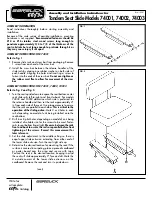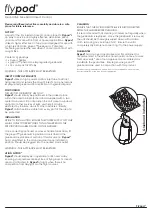
(with starting rating) batteries. The tester can test these types of batteries against
several battery capacity rating systems, including CCA, CA(MCA), EN, IEC, JIS
and DIN. The tester’s capacity in CCA terms is 100-1400 CCA.
The tester has a
recommended operating ambient temperature range of -4˚F to 122˚F.
Preparing Battery to Be Tested
Warning:
Always wear eye protection, appropriate protective clothing and other
safety equipment when working near lead-acid batteries. Do not touch eyes
while working on or around lead-acid batteries.
1. Be sure area around battery is well ventilated while battery is being tested.
2. Clean battery terminals. Wire brush them if necessary. Be careful to keep
corrosion from coming in contact with eyes.
3. Inspect the battery for cracked or broken case or cover. If the battery is
damaged, do not use tester.
4. If the battery is not a sealed Maintenance Free battery, add distilled water in
each cell until battery acid reaches level specified by the manufacturer. This
helps purge excessive gas from cells. Be careful not to overfill.
5. Confirm that all vehicle accessories are turned OFF to ensure you do not cause
any arcing and that the tested battery has a nominal voltage of 12 Volts.
6. If it is necessary to remove battery from vehicle to test, always remove ground
terminal from battery first.
Tester Preparation and Set-up
Loading Printer Paper
Open paper chamber cover. Set the paper roll into the paper chamber, oriented such
that the paper feeds off the bottom of the roll.
Feed the paper from the roll until the paper begins to feed past the cutter. Close the
paper chamber.
Note:
The tester uses standard thermal paper, available from most office supply
stores.
Tester Configuration
Note:
At any point in the set-up or battery test operation of the tester, if you wish





































